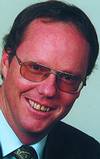
Recently I spent some time going through aviation articles in various publications that were published before the 11 September disaster. They were mostly in international security journals and date back to 1999. Consistent trends that emerge in the articles are the breadth of aviation security, indications of weaknesses within the aviation system, and extensive reporting on technical developments that were to address security shortfalls.
Problems being experienced had been acknowledged, discussed, and even anticipated although no one anticipated the extent of potential damage as happened in the WTC and Pentagon incidents. Somewhat prophetically, Tony Cooper writing in Intersec magazine in 1999 notes that "even a one-inch blade is a deadly weapon in the hands of a person disposed to do harm with it".
What has been noticeable are the different approaches in different countries. In Europe and Israel, for example, where terrorist treats had been commonplace for some time, the government led security thrust was far more pronounced. In the USA by contrast, airlines who were responsible for security at airports in the USA had in a number of instances being repeatedly fined by the Federal Aviation Authority for noncompliance with security standards. With 9/11 the emphasis and implications for aviation security have changed. US Transportation Secretary, Norman Mineta stated in mid-January 2002 that: "all of us here understand that we have entered a new era in transportation, an era in which a determined enemy has challenged one of America's most cherished freedoms, namely, the freedom of mobility".
Tony Cooper in the same Intersec article mentioned above notes that "every aviation problem begins and ends on the ground". Airport security is thus paramount to the entire aviation system. There are two main themes to aviation security - one is the safety of the personnel in the airport and aircraft characterised by a number of zones of protection. The other is the prevention of crime and particularly theft within the airport grounds, including the protection of passengers, freight, vehicles, and business operations. Safety became paramount in airports subsequent to the 9/11 disaster and authorities responded by putting hugely increased numbers of security and in some cases military people on the ground. In addition, the enforcement of procedure was increased and the proportion of passengers and bags searched increased radically. Queues extending outside terminals were common. Despite this, security was not as effective as desired. In the US, terminals were cleared and even closed at major airports as people slipped through cordons by mistake and incidents of people carrying weapons onto flights while testing security were reported. Congress responded by passing legislation that provided major funding and federalised the X-ray screener positions. In South Africa, a security contract at Johannesburg International was cancelled.
Technical detection methods have become increasingly under focus with aviation security, there is increased use of profiling of passengers, consideration of biometrics provide the latest scientific proposals, and at the other extreme, the use of dogs are implemented at some locations. A review of the questions asked of passengers is also being looked at to see if these can be more rigorous. However, the broad application of these methods seems to fall short of the multilayered system expected with a variety of problems in each of them. Key to any success of aviation security is the management strategy, procedures and implementation. The shotgun approach needs to be streamlined into a coordinated and comprehensive programme of security.
Another essential component is the calibre of the people. While this goes back to a theme I often repeat, one can appreciate it when one looks at X-ray screener turnover rates of 300 and even in extreme cases 500% at US airports. In the UK and Europe, X-ray screeners in particular were seen as important components in the security process. Salaries of these screeners could be double that of their counterparts in the US. However, despite the critical nature of the positions, there has been no validated method of selecting X-ray screeners until the beginning of January this year. Extensive research sponsored by the UK Department of Transport, local government and regions and performed by the defence evaluation and research agency (now QinetiQ) reviewed up to 25 psychometric international instruments and found only a couple that were effective in choosing the right people. Performance management and training have also undergone extensive reviews both in the US and UK with these now being integrated into threat image projection systems that continually measure the effectiveness of X-ray screeners.
Ensuring effective human factor interaction and benefits from X-ray technology is now a major part of the UK aviation security strategy. Making X-ray screeners in the US federal employees, an extensive selection and recruitment process, and increasing salaries is likely to greatly enhance this side of aviation security in the US. Clearly, this is one area of aviation security where the impact of people is being recognised. Greater consideration of the human factor, effective selection, in-depth training, and a more coordinated management strategy can provide aviation security more generally with a better capacity to deal with the challenges ahead.

For further details contact Dr Craig Donald, Leaderware on tel: (011) 787 7811.

© Technews Publishing (Pty) Ltd. | All Rights Reserved.